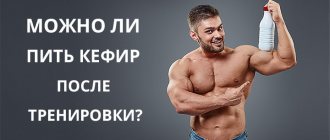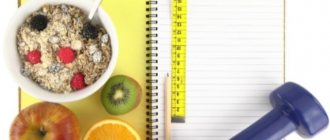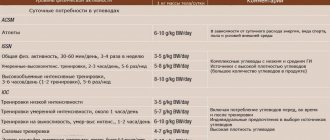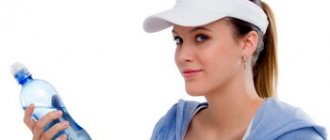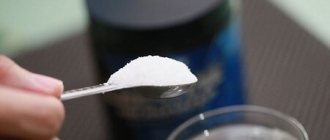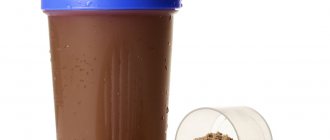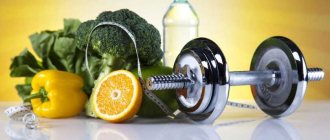Do your muscles hurt after strength training? This means you are not yet ready for the stress. Find out how to recover faster and progress as quickly as possible.
6 Tips for Faster Post-Workout Recovery
Whether you're trying to gain muscle, increase strength, or lose weight, you need to take care of yourself 24 hours a day. This is not an exaggeration. Of course, an hour or two of training is serious, but it only sets an incentive for growth. What you do the rest of the time will determine whether you can achieve your goals.
The recovery process that occurs outside the gym is primarily related to nutrition. It's probably your diet that has the greatest effect on your fitness. But the recovery process does not end there. There are a lot of subtleties and nuances.
What is the importance of muscle recovery after exercise?
During training, many biochemical processes occur. Muscle fibers are injured and glycogen is consumed. The response to stress most often manifests itself in pain after exercise. Of course, you can leave the gym and spend the rest of the day as if no training had ever happened. But the essence of proper recovery is to get the maximum benefit and reduce all the negative consequences of muscle microtrauma.
According to A. Barnett's 2006 study on recovery between workouts in advanced athletes, neglecting recovery will leave you unable to train properly and perform the required amount of work the next time you go to the gym. Fatigue can lead to injury. Moreover, full recovery is necessary to achieve optimal athletic performance.
Unfortunately, recovery is a purely individual matter. Factors like age, genetics, training style and experience are extremely important. A 25-year-old professional bodybuilder and a 50-something rookie woman will recover differently. However, the following 6 tips will help almost anyone recover as efficiently as possible.
Useful article: 15 techniques for effective training to gain muscle mass
Types of recovery
The world of sports is divided into professionals and amateurs. The first ones strive to take prizes, so they need to work hard. There is no way to sit still. The latter use physical activity to improve health. For them, skipping training is common. What type of recovery is suitable for each category of athlete?
Active
The choice of professionals. As popular wisdom says, the best rest is a change of activity. A simple cardio workout will keep your muscles toned and stay in shape before a performance.
This also includes stretching and other types of active actions. The muscles continue to grow.
Passive
The lot of amateurs. All you need to do is calmly go about your business. Sleep, eat, walk. This type of recovery has a drawback - muscle growth stops at the same level.
Movement is life? Without a doubt. However, sitting can also be useful. There's no hurry.
Consume BCAAs and carbohydrates during exercise
Drinking plain water between sets is essential for proper hydration and body temperature regulation. But adding carbohydrates or amino acids to your water will also improve your energy and well-being.
“Carbohydrates are the main source of energy for your muscles,” says nutritionist Paul Salter. – The harder and more intense you train, the more fuel your body requires in the form of carbohydrates. This is especially true for sports like powerlifting and bodybuilding, where short periods of time under tension are expected.”
But getting energy during exercise is just the beginning. “Carbohydrates have an anti-catabolic function. They minimize muscle breakdown,” Salter writes. – If consumed during training, they will reduce overall muscle damage from exertion. They have a positive effect on recovery time because fewer muscle cells are injured.”
To get maximum benefits, consume the “right” carbohydrates. Fast carbohydrates like glucose, dextrose or carbohydrate sports nutrition products are suitable for us. It is also important to consider the duration of the workout and the amount of carbohydrates consumed so as not to overload the gastrointestinal tract.
Carbohydrate intake during exercise
| Duration of training | Amount of carbohydrates | Amount of water |
| Less than 45 minutes | 0 grams | 500–750 ml |
| 45–60 minutes | 15–30 grams | 500–750 ml |
| 60–90 minutes | 30–50 grams | 750 ml |
| Over 90 minutes | 50–75 grams | 1 l |
Carbohydrates are great on their own, but when paired with branched chain amino acids (leucine, isoleucine, and valine), they become even better. Carbohydrates and BCAAs are designed to reduce muscle breakdown and cortisol levels, which is not the case with plain water. In addition, taking them before or during exercise will reduce post-workout pain.
Pharmacology
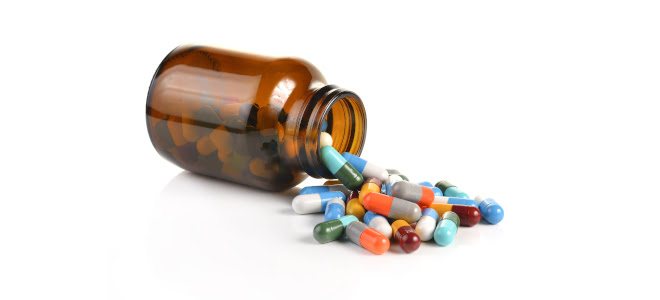
It is not always possible to ensure proper recovery after strength training. The reason is simple - lack of time. Pharmacy medications will help speed up the process. They can be purchased in any city and even town. Medicines are divided into 5 groups:
- Vitamins . Replenishes the lack of nutrients. Names: vitamins C, E, B15, complexes Vitrum, Revit, Complivit.
- Means of plastic influence . Helps synthesize muscle tissue. Names: Riboxin, Melatonin, Potassium Orotate, Carnitine.
- Energy . Extend the working period. Names: Asparkam, Glutamine, Methionine, Calcium Gluconate.
- Adaptogens . Needed to adapt to time zones, climate, routine. Names: Ginseng, Eleutherococcus, Aralia Manchurian.
- Creams and ointments . Warm, cool, stimulate tissue regeneration. Names: Finalgon, Troxevasin, Apizartron.
We talked about what to drink after training to restore strength and energy, and what food to eat. Athletes can only use the information received to their advantage.
Related publications
- Pharmacy preparations for recovery
- Sports massage: 3 types
- Recovery after exercise
- Hot bath after workout
Massage roller after workout
Massage is wonderful. But often there is not enough money or time for it, and not many studies have confirmed its benefits for recovery. This does not mean that you should refuse a massage if you like it. For example, R. M. Tiidus in his work “Alternative treatment of muscle microtraumas” recommends massage after training. You can simply resort to a more affordable option, for example, self-massage using a roller.
Over the past few years, research has been conducted on the benefits of myofascial release. A 2015 Canadian study (“Rolling for muscle fatigue and recovery from dynamic exercise”) found that using a foam roller reduced post-workout soreness. The subjects performed self-massage on a roller immediately after training, 24 and 48 hours later.
Someone might think that a massage roller can be replaced with a regular stretch. But that's not true. The 2011 study by R.D. Herbert and M. de Norona, “Stretching as a Way to Prevent Muscle Soreness after Exercise,” found that stretching was ineffective in promoting recovery.
If after training you don’t have the energy and time to massage with a roller, try this: use the roller after each approach in the last exercise. You will get all the benefits without stretching your time in the gym.
Recovery stages

Usually, restoration of strength and energy after a workout does not happen on its own. It proceeds in stages. Why know this? Well, for example, so as not to miss the next workout, which can fatally affect the volume of muscle mass.
Fast
Starts immediately after completing your workout. Lasts up to 30 minutes. At this stage, the body strives to return to its normal state, so it continues to waste resources. The peripheral nervous system then conducts an internal audit and detects nutritional deficiencies. Therefore you need:
- Drink mineral water without gas. This normalizes the water-salt balance.
- Eat food containing glucose. Energy replenishment.
Slow motion
Starts after a quick one and lasts 24-48 hours. At this stage, that same soreness comes. The body begins to repair damaged tissue. The intensity of the inflammatory process reaches its maximum level. There is an urgent need for amino acids. You need to do the following:
- Eat 30-40 grams of pure protein.
Super compensation
It starts in about 48 hours and lasts another day or two. Automatic brain structures work ahead of the curve. They assume that the athlete will increase the load next time. As a result, a reserve of amino acids is created for the future to increase muscle volume. Just need:
- Do a new workout. Otherwise, the muscles will not grow and a rollback will begin.
Deferred
Occurs immediately after supercompensation. If the body receives a new load, it begins to build muscle. Otherwise, the passive “return to normal life” mode is activated. The hormonal background levels out, anabolic processes gradually fade. At this time you should:
- Have a good rest and sleep. There's no need to rush. The rollback has already taken place.
Infrared sauna for recovery
Muscle recovery is faster in an infrared sauna.
Infrared saunas increase body temperature. In one study, subjects experienced reduced post-exercise muscle soreness by regularly going to the sauna. The infrared sauna is a favorite method for relieving tension among American football players.
“Infrared saunas relax tired muscles and joints, which is necessary for people involved in strength sports,” say researchers F. Oosterveld and B. Westhuis in the scientific article “Infrared saunas and health; physiological effects of hyperthermia." “Because infrared saunas increase body temperature, heart rate, blood pressure and sweating, you need to be adequately hydrated.”
Do not confuse infrared therapy with a regular sauna, steam bath or jacuzzi. After a good workout, your body temperature is already elevated. Saunaing after exercise will lead to dehydration, cramping, and in some cases, hyperthermia. For this reason, infrared saunas are not recommended immediately after exercise.
An infrared sauna is available in many spas. If you're actively training and preparing for a competition, an infrared sauna is a good way to reward yourself for your efforts in the gym.
What is “clogged” muscles?
The physiological cause of congestion (in scientific terms - soreness) is elementary muscle fatigue. Those. they have no opportunity to relax. If you overdo it with heavy training without proper preparation, if you increase the load too sharply, you can even end up with a muscle tear.
Causes of muscle congestion
- the muscles are swollen due to the production of lactic acid (its production always occurs when muscles are tense);
- muscle contraction without relaxation does not allow blood in the required volume to flow to this muscle;
- accumulation of excessively large volume of blood in the legs;
- less often – microtears and microcracks of muscles.
Consume More Protein Post-Workout
Most people add about 20 grams of protein powder to their carbs in their post-workout shake. But scientists advise doubling this amount for better protein synthesis and recovery (L. S. McNaughton, “Response of Muscle Protein Synthesis After Fatigue of All Muscle Groups to 40 and 20 Grams of Whey Protein”).
Research has shown that protein synthesis increased by 20% in those who consumed 40 grams of protein. In addition, the improvement in protein synthesis did not even depend on the percentage of body fat in the test subject.
Increase your sleep time
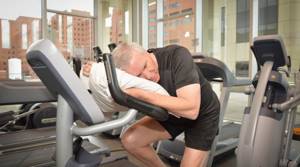
Lack of sleep is a nightmare for your form. Brazilian scientists M. Dattilo and J. Antunes have proven that lack of sleep and poor quality of sleep can increase weight (“Sleep and muscle recovery: endocrinological and molecular basis for a new hypothesis,” 2011). This happens mainly due to increased hunger and appetite. Poor sleep also impairs muscle recovery and protein synthesis by increasing catabolic hormones and decreasing anabolic hormones such as testosterone and insulin-like growth factor.
It is important not only the amount of night sleep (7-9 hours), but also its quality. To get the most out of your sleep, follow these tips:
- Keep the room temperature cool. Rooms without air conditioning that are located on the sunny side will heat up more in the summer and take longer to cool down. Use fans and cover windows.
- Use blackout curtains, especially in summer when the sun rises early in the morning.
- If noise outside the window or from neighbors prevents you from falling asleep, turn on a recording of nature sounds - they will help you relax.
- Don't forget about the phenomenon of sleep apnea syndrome (sudden cessation of breathing during sleep). This is a common occurrence among bodybuilders and athletes involved in strength sports.
Sleeping mode
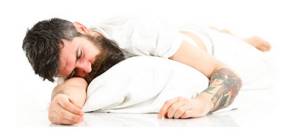
It is no secret that the restoration of muscle tissue, as well as its growth, occurs during sleep. By depriving himself of a night's rest, an athlete causes serious damage to the training process. To maintain and improve your results, you need to sleep at least 8 hours a day. There is an opinion that 6 hours is enough for people with individual characteristics. But science does not confirm this opinion.
Scientists recommend maintaining a sleep schedule. A full rest will restore strength much more effectively than a short one.
Do light cardio for a healthy heart
This is great advice that many people neglect. After your main workout, you should do some gentle cardio. Its length may vary. At the end of the workout, the heart rate (hereinafter referred to as HR) should not exceed the norm by more than 10–20 beats. The study showed that such aerobic exercise will help remove metabolic waste products (lactate, ammonium and hydrogen ions) that arise after anaerobic exercise. As a result, you will recover much faster for the next workout, say T. Bompa and S. Bucicelli in their work “Periodization of the training process in sports.”
First you need to find out your normal heart rate. You can measure it every day in the morning for several days, and then calculate the arithmetic average.
When you have finished your workout, measure your blood pressure and heart rate. Do 2 minutes of low-intensity cardio for every 10 beats above your normal heart rate. It is recommended to use an elliptical if you have done upper training before, and an exercise bike if you have done leg training before. If you did cardio before, use any exercise machine you like.
So, if your post-workout heart rate is 135 beats per minute, and your normal is 65, then the difference between them is 70. This means that you need to do cardio for 14 minutes.
After all this, we go to the shower and begin to actively recover. After some time, we return to the hall and repeat again and again.
Recovery methods
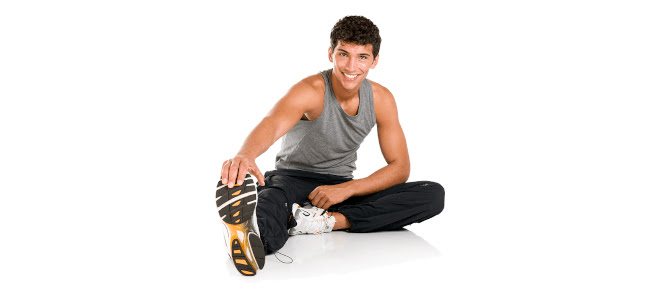
There are plenty of options to ensure proper recovery after a tough workout. Scientists have recognized 3 methods as the most effective. But we'll talk about 8.
Massage
The most advanced method. The first professionals in the field of physical influence on tired athletes appeared at the beginning of the 20th century. Nowadays there are such people in every professional team. Sports massage techniques help remove swelling, warm or relax muscles. This is a good way to cope with sore throat. After the specialist’s work, the pain disappears.
Plus, kneading soft tissues activates blood flow, which flushes out breakdown products from the muscles: blood clots, “garbage” proteins. How to distinguish a real massage therapist from an amateur? The first does not cause pain to athletes; it works intensively, but carefully. The second one strives to complete all the techniques in the minimum amount of time, going through them in a chaotic order.
Compression underwear
You can't win prizes without good sportswear. The “slimming” shape has a massage effect. The principle of its operation is simple. During heavy physical work, the walls of blood vessels are deformed. Because of this, the internal valves stop working smoothly. Blood stagnates in the lower sections, loading the heart. Elastic tissue supports the veins and restores the functionality of the valves.
As a result, blood flow returns to normal. The myocardium does not spend enormous effort on its work. The muscles receive enough oxygen. The level of endurance increases. Literally a second wind opens. Due to its supporting properties, compression garments reduce the number of microtraumas. Therefore, the next day the athlete receives a minimum of pain.
Cold water
British track and field athlete Jessica Ennis-Hill attributes her athletic success to diving into icy water. She used the original container for “bathing” - a trash container on wheels, and not a bathtub. Scientists conducted an experiment on this matter. The conclusions were not very optimistic. “Chill” relieves soreness quite effectively.
There is a nuance. Cooling reduces the symptoms of inflammation, but too radically. Metabolic processes slow down so much that muscles stop growing. Too much to pay for the anabolic effect. This method can be used short-term and only in cyclic competitions. Cold water is not suitable as a full-fledged means of recovery.
Hot water
We mentioned “frosty liquid”. But what happens if you increase the water temperature? American scientists claim that immersion in a hot bath reduces inflammation. There are other advantages too. For example, after the procedure, blood sugar levels return to normal. This reduces the risk of developing diabetes and obesity. But simple training works the same way.
A light jog gives the body everything that a warm bath does. But there are side effects. In men, reproductive function suffers. Sperm become inactive. In addition, if you dive into “boiling water” after strength training, your heart will become overloaded. The technique is good for warming up after exercising in cold air. Swimmers and biathletes will appreciate this opportunity.
Cold and hot shower
The golden mean between cold and hot water. Alternate dousing, first of all, stimulates the strengthening of the immune system. And this is important in the current climate of a global pandemic. A common cold can always develop into the flu. And the bench is secured for a long 2 weeks. Contrast shower is a natural substitute for adaptogens. The procedure will help adapt the body to difficult conditions.
It should be remembered that the temperature difference should not exceed 30°C. The first thing you need to do is stand under warm water, and then start hardening. The cooling time is 2 times less than the heating period. For example, a cold jet is 1 minute, and a hot jet is 30 seconds. After a shower, rub your skin with a towel. This will enhance the positive effect. Blood will flow to the capillaries of the skin.
Sauna or bath
Controversial recovery method. A high temperature after exercise may not be beneficial. The body has already lost enough fluid and minerals, and it is forced to spend time in a stuffy steam room. The myocardium works to the limit, pumping thick blood. The situation can only be saved by drinking plenty of mineral water without gas.
A sauna after a workout does one thing well – reducing body weight to get into the desired weight category. The side effect is the relief of emotional and mental stress. In the minds of the average person, visiting a bathhouse is strongly associated with relaxation. Hence the relaxation. But you can’t visit the steam room with a high heart rate. You need to wait until your heart rate drops to at least 75 beats per minute.
Stretching
The effect of good stretching is comparable to what you get from a massage. After exercise, muscles cool down and lose their elasticity. Clotted blood and waste products interfere with the delivery of oxygen. Pain from microtraumas increases over time, which causes sore throat. Stretching restores muscle mobility. Metabolic processes begin to proceed faster.
Intense blood flow clears debris, inflammatory processes disappear. The athlete regains vigor and relieves the psyche, exhausted by constant pain and stiffness of movement. To enhance the effect of stretching, you need to go out in compression underwear. The tissue stabilizes the blood vessels, the muscles will receive an additional portion of oxygen.
Cardio training
A classic method to recover from heavy exercise without harming your health. The good thing is that there is no need to give it your all. No need to go to the gym. All you have to do is put on your favorite uniform and run along the street or embankment. It is better to take a heart rate monitor with you. It allows you to control your heart rate. The indicator should be between 110-130 beats per minute.
Jogging can be replaced with a brisk walk. This is completely justified, because there is no need to chase high results and compete with rivals. Nordic walking is popular now. But, mostly, it is representatives of the older generation who take up the fight.
